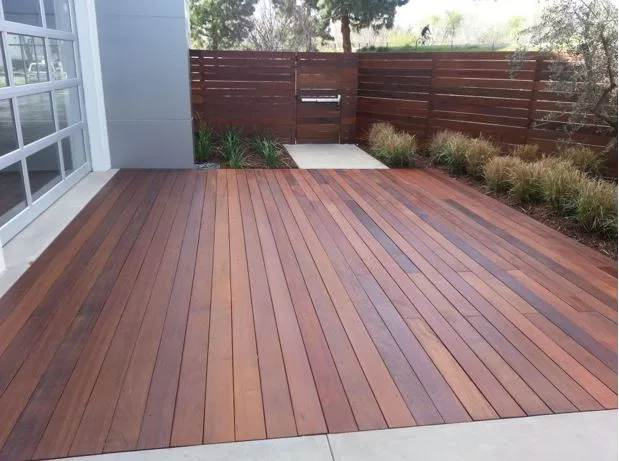How to Do Deck Staining and Sealing – A Complete Step-by-Step Guide
A deck can be your treasured outdoor space as a well maintained deck enhances the aesthetics of your space in addition to making it strong and withstanding all weather conditions. Staining and sealing of your decks are very important processes that safeguard your wood against moisture, UV damages, and general usage wears out. This step-by-step guide is aimed at giving a clear and detailed description on how to stain and seal like a pro in order to achieve lasting results, which in effect means staining and sealing your deck in a professional manner.
Why Deck Staining and Sealing is Essential
Decks are exposed to nature continuously such as sun, rain, snow and changes in temperature. However, when it is used recklessly, the wood deck:
- The degradation and fading out of discoloration caused by the UV rays.
- They absorb water, and it may cause warping, rot, and even mold.
- Create cracks and splinters after a long period of being exposed to weather stresses.
Stain and sealing your deck provides you with a protective layer on the look of your deck besides providing your deck with years of effectiveness without the ugly stain of decays wood.
Step 1: Inspect and Prepare Your Deck
The preparation will ensure you achieve the best results before beginning to stain:
1.1. Inspection of the Deck Surface
- Also, inspect the loose boards, nails, and screws and repair them immediately.
- Ensure that mildew, mould and water stains are checked and needs to be treated.
- Determine whether there are some areas in which there is a lot of wear and tear that should be changed.
1.2. Proper Deck Cleaning
- A deck cleaner or solution of oxygen bleach will take out the oil and grease, dust and old stains.
- Dried on dirt can be cleaned with a power washer or a brush with stiff bristles.
- It is predicted that after 24 to 48 hours after placing it on the deck in order to dry, it will be dried completely, and then the process will be continued by the second stage.
Step 2: Sanding the Deck for a Smooth Finish
Sanding makes the surface of the wood smooth and also makes the stain seep into the wood well.
- Rough areas should be done with a random orbital sander or a pole sander using 60-80 grit sandpaper.
- Invest in dividing edges and also traffic sections.
- Remove all the dust generated in the sanding which will cause a hindrance by sweeping or vacuuming up all of it.
Step 3: Choosing the Right Deck Stain and Sealer
It is important to choose the right product to ensure long time protection.
3.1. Deck Stain Types
- Transparent Stains: enable some color to come through, provide some accentuation of the natural grain in the wood.
- Semi-Transparent Stains: Appear as an eminent glow because of their textural nature and the provision of slight pigmentation.
- Solid Stains: Give a lot of color and maximum UV protection and eliminate grain.
3.2. Types of Sealers
- Water-Based Sealers: Dries fast, Eco-Friendly, Mold Resistant.
- Oil-Based Sealers: Oil-based deck sealer for pressure treated wood is ideal for old decks as they penetrate deeply and provide long-lasting protection, making them the best choice for older wood decks.
When, pick your climate, wood sort and any one of your employ end result.
Step 4: Applying Deck Stain Like a Pro
Proper application ensures a smooth, even, and durable finish.
4.1. Gather Tools and Materials
- High-quality paintbrushes, rollers, or sprayers
- Paint tray or bucket
- Clean rags or cloth
- Protective gloves and mask
4.2. Work in Sections
- Consistency should be started by staining in small controllable portions.
- Apply it in the direction of the grain of the wood.
- This should not be overlapping or getting mixed up, as it may lead to uneven drying.
4.3. Apply Multiple Thin Coats
- A thin coat (two coats recommended) is more absorbent than a thick one coat.
- Make 4-6hrs in between dryings (refer products manual).
Step 5: Sealing the Deck for Maximum Protection
After staining, sealing locks in color and provides extra water resistance.
5.1. When to Seal
- Wait 24–48 hours after staining before applying sealer.
- Ensure the weather is dry and no rain is forecasted for at least 24 hours.
5.2. Application Process
- Use a sprayer, roller, or brush to apply the sealer evenly.
- Avoid over-application to prevent a sticky finish.
- Allow the deck to dry for 24–72 hours before use.
Step 6: Deck Maintenance Tips for Longevity
Routine maintenance helps your deck stay in top shape for years.
- Clean the deck every 2–3 months to prevent dirt buildup.
- Reapply stain and sealer every 2–3 years or as needed.
- Keep plants, furniture, and grills from trapping moisture on the deck surface.
- Regularly inspect for loose boards or nails and repair promptly.
Pro Tips for Flawless Deck Staining and Sealing
- Before applying it on a large scale, test stain on an obscure little part.
- It should not be kept or used in direct sunlight or in blistering warm conditions because this will give blotchy finishes.
- Before using stain and sealer, to prevent bubbles, never shake, always stir.
- Use a quality applicator to apply with minimal streaking and aid level application.
Final Thoughts
Staining and sealing of the decks is not all about supplying beauty but actually the process that gives life to wood, saves it and makes it longer lasting and We suggest using Hempshield deck stain and sealer is the best fit for the longest lasting wooden deck. Using this step by step guide on how to paint your outdoor space, you have the potential of doing a professional grade job that would make your outdoor space beautiful and stay well guarded many years down the line.






